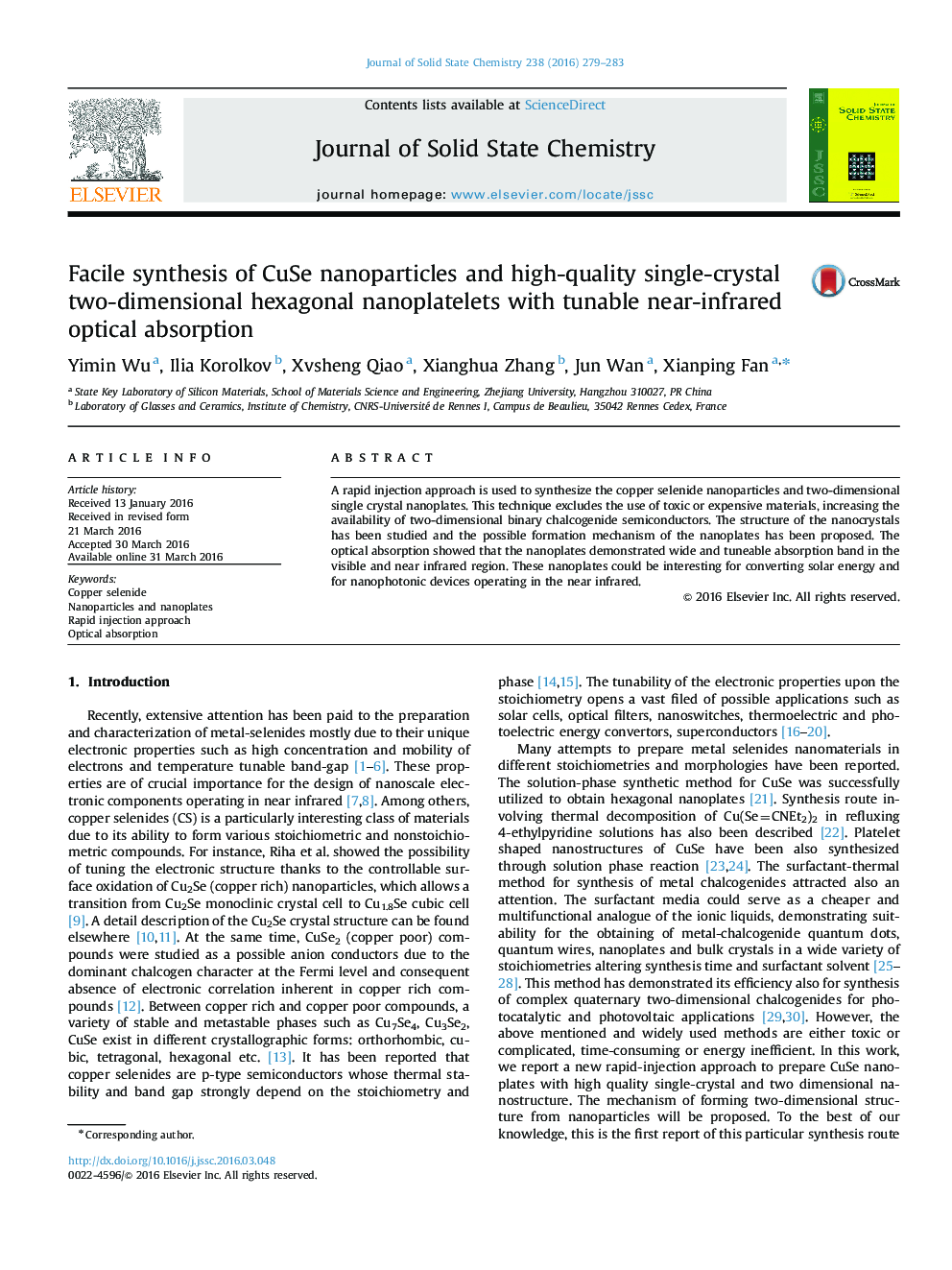| Article ID | Journal | Published Year | Pages | File Type |
|---|---|---|---|---|
| 1328880 | Journal of Solid State Chemistry | 2016 | 5 Pages |
•CuSe nanoparticles and nanoplates are synthesized by a rapid injection approach.•CuSe band gap can be widely tuned simply by modifying the synthesized time.•Al3+ ions have a significant impact on the growth rate of the nanoplates.•Growth mechanism of the CuSe nanoplates is based on the “oriented attachment”.
A rapid injection approach is used to synthesize the copper selenide nanoparticles and two-dimensional single crystal nanoplates. This technique excludes the use of toxic or expensive materials, increasing the availability of two-dimensional binary chalcogenide semiconductors. The structure of the nanocrystals has been studied and the possible formation mechanism of the nanoplates has been proposed. The optical absorption showed that the nanoplates demonstrated wide and tuneable absorption band in the visible and near infrared region. These nanoplates could be interesting for converting solar energy and for nanophotonic devices operating in the near infrared.
Graphical abstractTEM images of the copper selenides nanoparticles and nanoplates synthesized at 180 °C for 0 min, 10 min, 60 min. And the growth mechanism of the copper selenide nanoplates via the “oriented attachment”.Figure optionsDownload full-size imageDownload as PowerPoint slide
